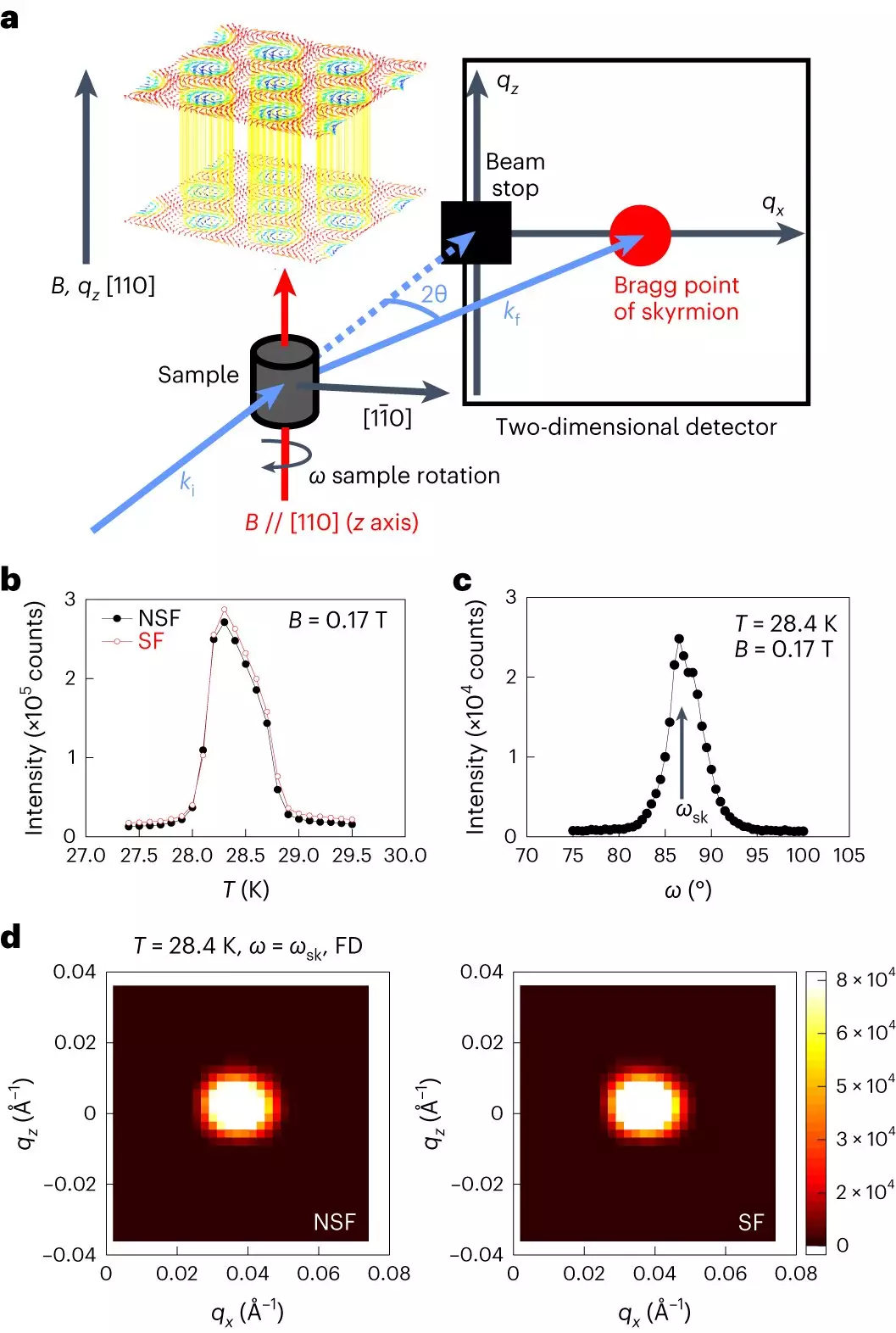The world of information technology is on the brink of a revolution as researchers at RIKEN, the flagship research institute of Japan, push the boundaries of spintronics. While conventional electronics rely on the manipulation of electric charge, spintronics harnesses the intrinsic property of electrons known as spin. By leveraging spin, scientists aim to develop faster and more efficient electronic devices that have the potential to revolutionize various industries. This cutting-edge field holds immense promise, and a team led by Hazuki Kawano-Furukawa from the RIKEN Center for Emergent Matter Science is at the forefront of this exciting research.
In their groundbreaking study, Kawano-Furukawa and her colleagues focused on investigating the dynamics of nanoscale magnetic whirlpools known as skyrmions. These fascinating structures, with their unique magnetic properties, offer the potential for significant advancements in information and communication technologies. Skyrmions have a distinct advantage over traditional electronics as they can be controlled using smaller currents or electric fields. This breakthrough opens up possibilities for applications such as power-efficient computer memory that retains stored data without constant power supply.
Unraveling the Secrets of Skyrmions
To delve deeper into the behavior of skyrmions, the research team turned their attention to manganese monosilicide, a helimagnet, distinguished by its helical spin patterns. The investigation required highly sensitive equipment capable of measuring the lowest energy magnetic excitations in the skyrmion states. The team utilized the advanced neutron spin echo technique, conducted at the prestigious Institut-Laue-Langevin in Grenoble, France, to achieve the necessary resolution for their experiments. With its unrivaled performance in studying material dynamics in magnetic fields, the IN15 neutron spin echo spectrometer provided the optimal platform for their research.
Confirmation of Theoretical Predictions
Through their painstaking observations, the team successfully validated theoretical predictions regarding the asymmetric dispersion of excitations within the lattice of manganese monosilicide caused by the string-like structures of skyrmions. These excitations exhibit differing behaviors based on whether they are traveling parallel or antiparallel to the cores of the skyrmion whirlpools. This groundbreaking confirmation of theory paves the way for further exploration and utilization of skyrmions in future electronic devices.
A Long-Awaited Confirmation
The road to these groundbreaking conclusions was not without obstacles. Two years of rigorous experimentation and analysis were required to ensure the validity of the team’s results. The initial experiment in October 2018 provided a foundation, but the researchers needed to ensure that the observed behavior was exclusive to the skyrmion phase and not present in another magnetic structure known as the conical phase. Through their continued efforts, Kawano-Furukawa and her team aim to investigate the coexistence of these two phases in manganese monosilicide, which holds potential implications for further advancements in the field of spintronics.
As researchers at RIKEN push the boundaries of spintronics, their groundbreaking study surrounding skyrmions and their unique properties brings us one step closer to harnessing the full potential of spin-based devices. The ability to control and manipulate spin opens up exciting possibilities for faster, smaller, and more efficient electronic devices that could transform industries such as computing and telecommunications. The research conducted by Kawano-Furukawa and her team serves as a vital stepping stone towards harnessing the power of spintronics and driving innovation forward in the field of information technology. With continued dedication and advancements in understanding, the future of spintronics holds great promise.



Leave a Reply